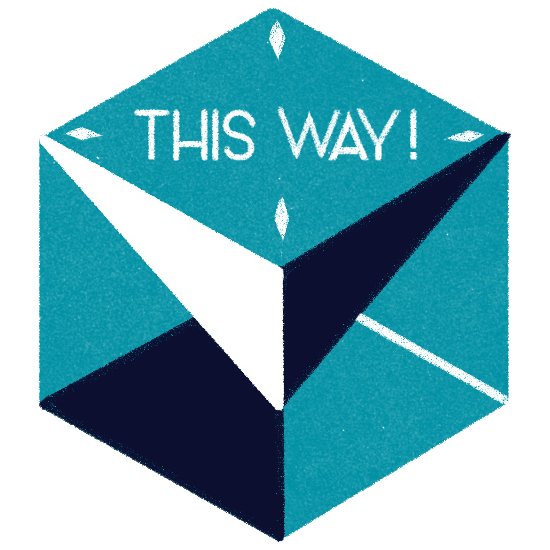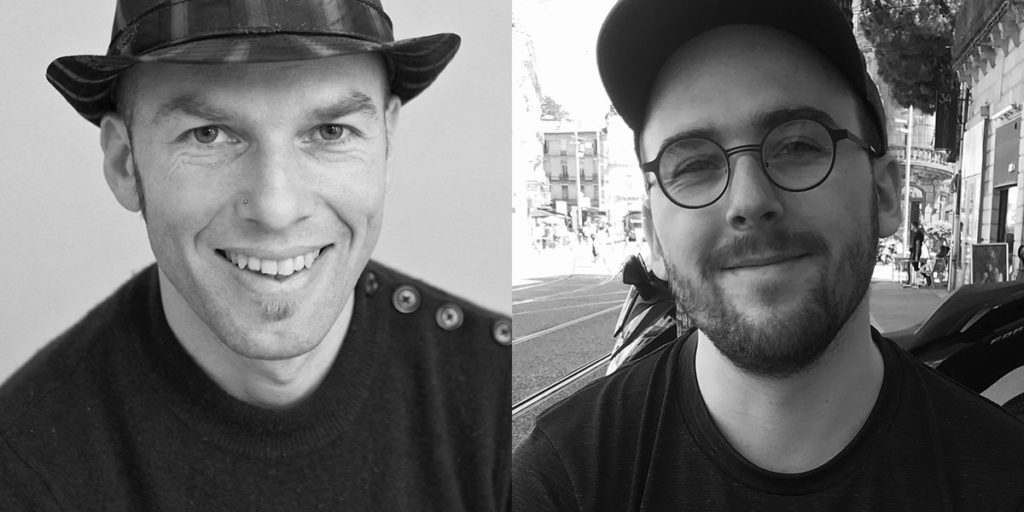
ANTON : Hello Explorers!
This is Anton Kawasaki here — I’m the newest member of team This Way! And we’re going to be doing a bunch of interviews here on our website. Starting with members of team This Way!, and then eventually branching out and hopefully interviewing some other major players in the board game industry. So if there is someone you like for us to talk to… please let us know.
So to start I’m going to be interviewing the founders of This Way! They are two brothers, from France, and the co-designers of the successfully Kickstarter game I C E, which is going to be coming to nearly 4000 backers in spring of 2022. It’s also going to be reaching retail stores worldwide later in that year. So stay tuned.
Without further ado, let me introduce you all to Samson and Hugo from This Way!
Hi guys ! How are you doing today ?
SAMSON & HUGO : Well good !

ANTON: Great! First I wanted to ask where the name of the company “This Way!” comes from ?
SAMSON : The name comes from our 3rd brother, Nathan. It’s a reference to a manga, I don’t remember the name of the manga it was 7 or 8 years ago. We like the idea that it gave some direction. We can see the name in many faces. Like you can tell [aggressive] “This is THIS WAY!!!” or you can tell [more chill] “well… This Way…”. Any direction you can give with just these words.
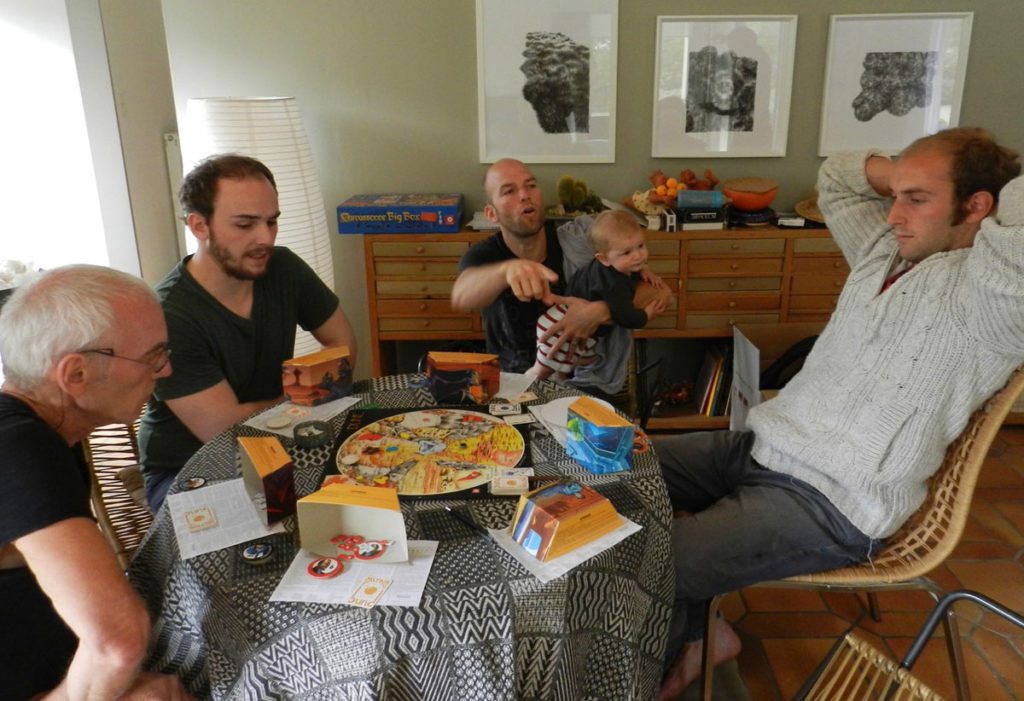
A : Sounds cool. So how did the development of I C E (the game) first start? Who first brought up the idea of creating a board game? And were there other themes/mechanics that you explored before deciding on the world of I C E?
S : The very idea of making a game first came from the family group. We come from a family of board game fans. So after a while it came naturally. But the idea is that when you make it like family stuff you don’t have the professionalism necessary for the birth of a marketable game. So it took us a while to go on the professional mode.
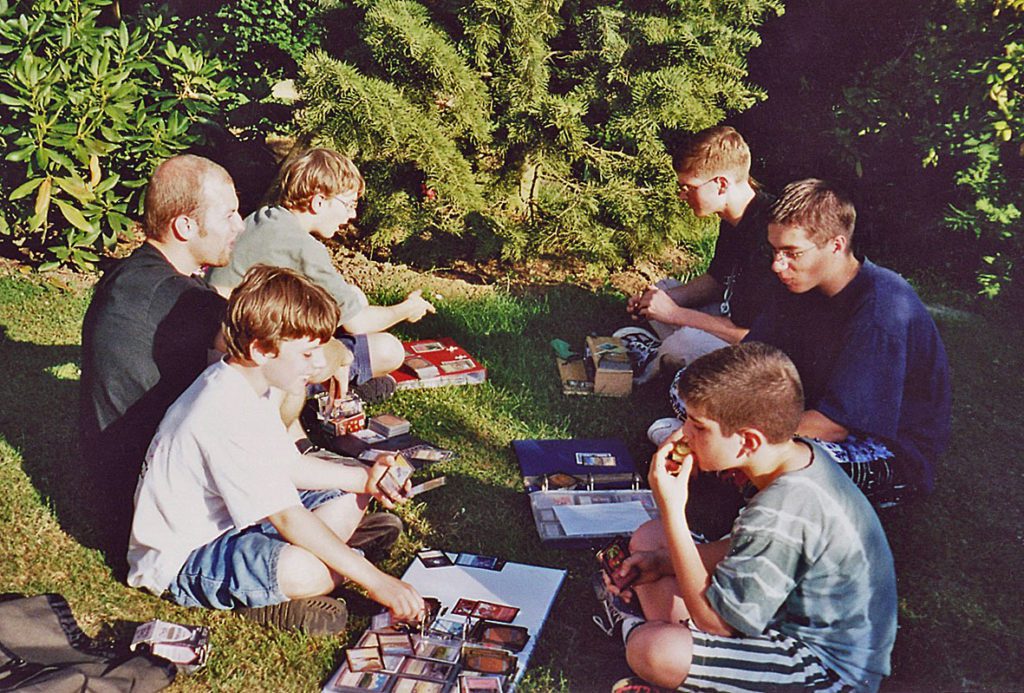
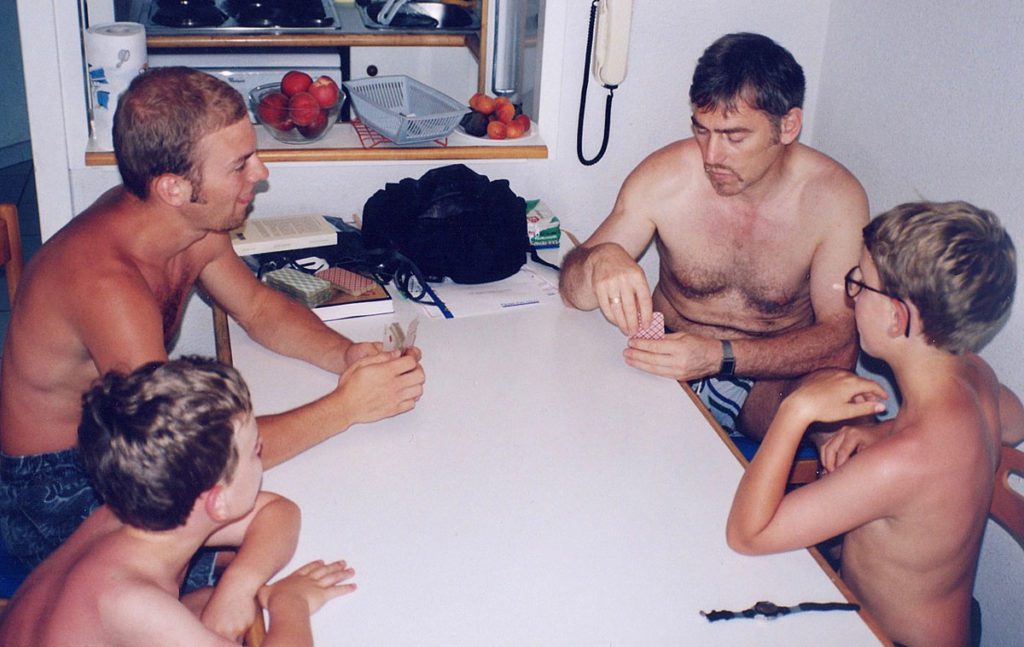
HUGO : Like Samson said we were born in a family of addict ludophile. So we quickly imagined making games together, but between imagining it and actually really creating it there are two worlds. So it has been almost 15 years since we had this idea…
A : Wow!
H : …before we finally on January 1st 2019 we got to work. It was like one of those New Year’s resolutions you make every year but this time we managed to keep it.
A : Did you guys have the idea of I C E at the very beginning?
S : Not from the very beginning — like five years ago or more — we had in mind an ecological theme, a game based on ecosystems and biodiversity.
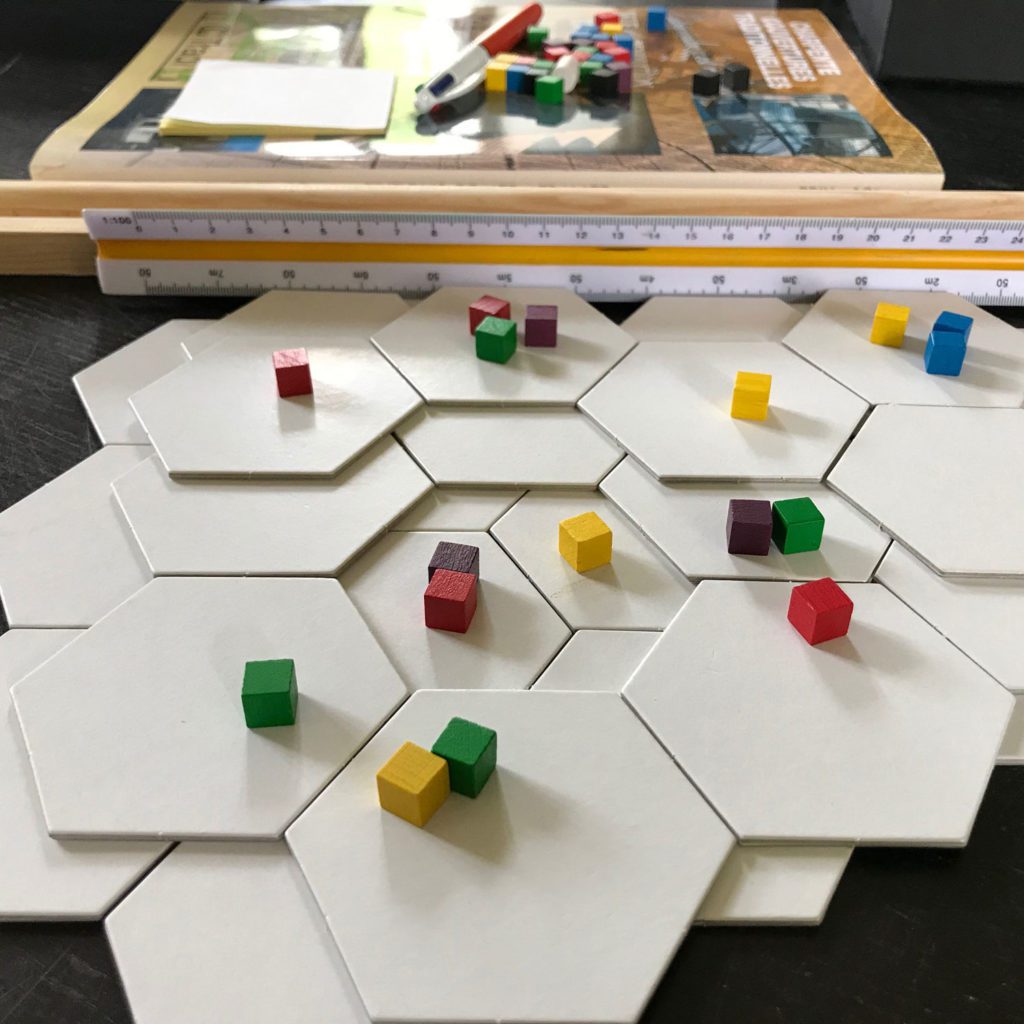
A : At what point did the “layers of hexagon tiles that you dig through” come into play? Were there any challenges that you initially faced there?
H : We had like 4 or 5 original core mechanics and we finally chose to develop this one. This mechanic came very quickly, this way. But you have to know the main difficulty at the beginning (and still today for our manufacturer!) is clearly the board itself that contains and maintains the tiles between them. This is really the most complex technical aspect of the game, and it turned our brains upside down more than once.
A : Haha yeah it’s really a very unique game mechanic.
H : Just the making of our first prototype took us hours to be made. It was 5 layers of tiles — I remember we were with our “cutter,” and we really enjoyed doing it for hours and hours…
A : Has there always been 5 layers or there was like less at first and you’re adding more or what ?
H : There was actually 3 layers initially.
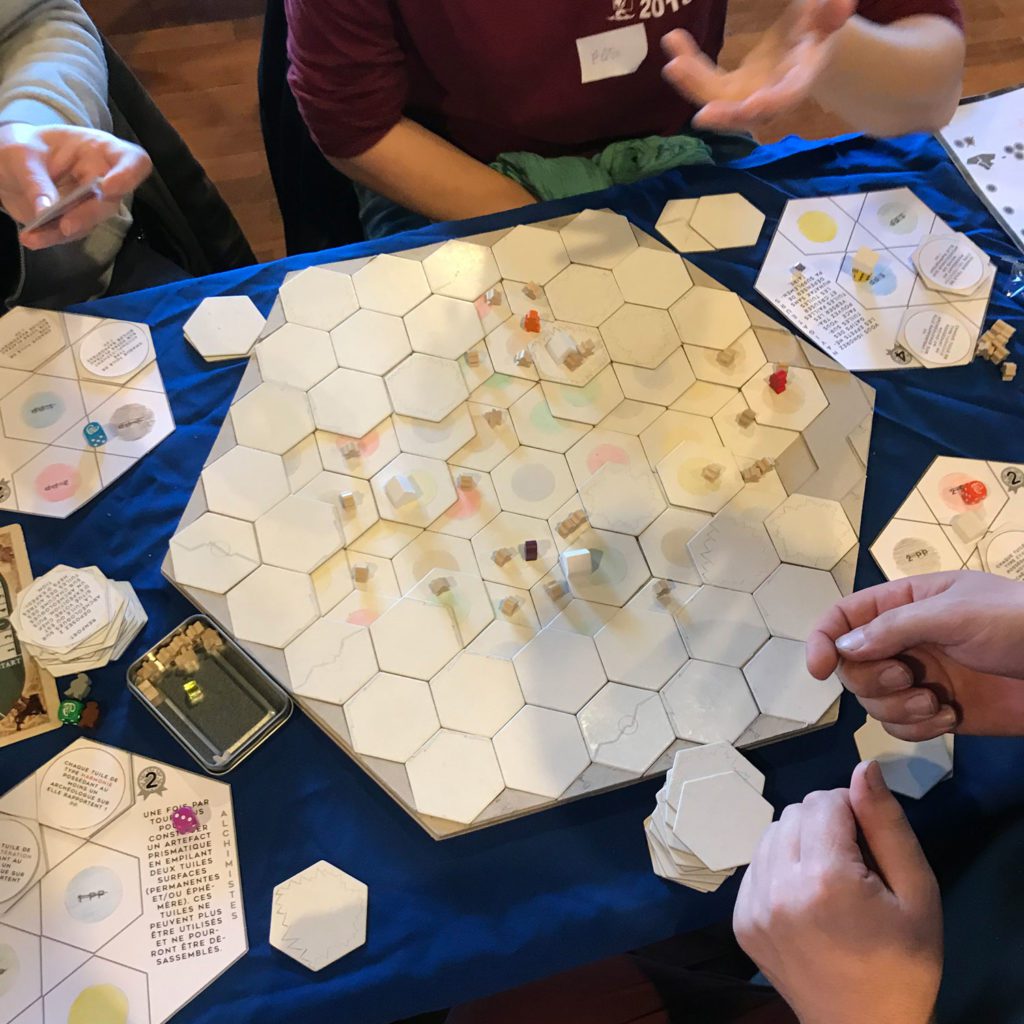
S : By the years it’s changed a little bit, and if I remember well, Hugo, you have some game design notebooks where you wrote this down like 5 or 6 years ago — and the idea of the multi-tiles.
A : Interesting…
S : We liked the geometric cubic shapes that we found when digging the tiles. The idea that you have a 3d picture when you remove some tiles.
A : Yeah! So I wanted to ask you… how does your “co-design” process work for the two of you? Like is one of you more “The Thinker” and the other “The Themer”? Is there a specific way you both approach creating mechanics together?
H : Well… about mechanics versus lore, I don’t think there is really anyone who is more one than the other. Although I’m more on the game design side and Samson is more on the editor side… the publisher side. We work together on a lot of things, and we always consult each other for the important things. And in fact almost everything is important!
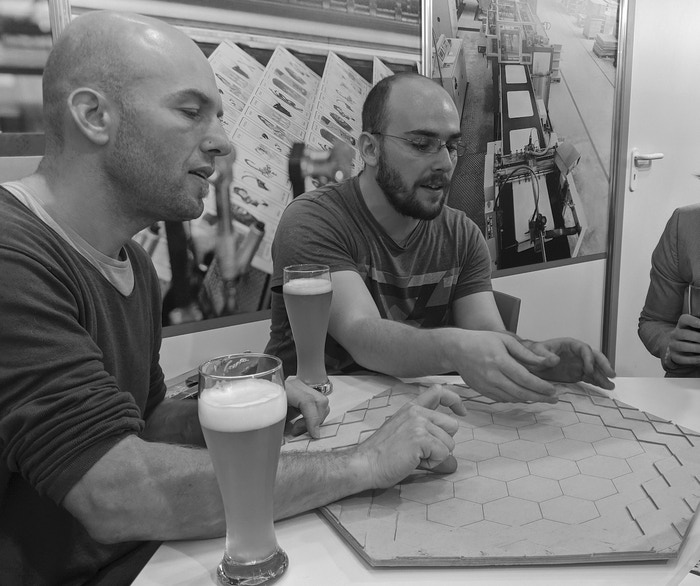
A : Have you ever gotten into a major disagreement about how the game was developing?
S : Hmm. Well being brothers I can begin with the common “structure”….. we have a strong common culture — on fantasy and science fiction for example — or the fact we are just fans of eurogames. And we share, for sure, many values that we have in common. But afterwards there are clearly many moments where we were not, like, on the same…
A : … same page? haha
S : Yeah! And we had to decide on just one given solution. We set up conflict resolution processes for example. I am really interested in these areas of communication, because I am a trainer in effective and benevolent — I don’t know if it’s a good word — but benevolent communication, like non-violent communication.
A : So as you guys have said, this game has been in development for so many years. For the majority of the last two, the world has been in (as we all know) a pandemic. How has that impacted your development?
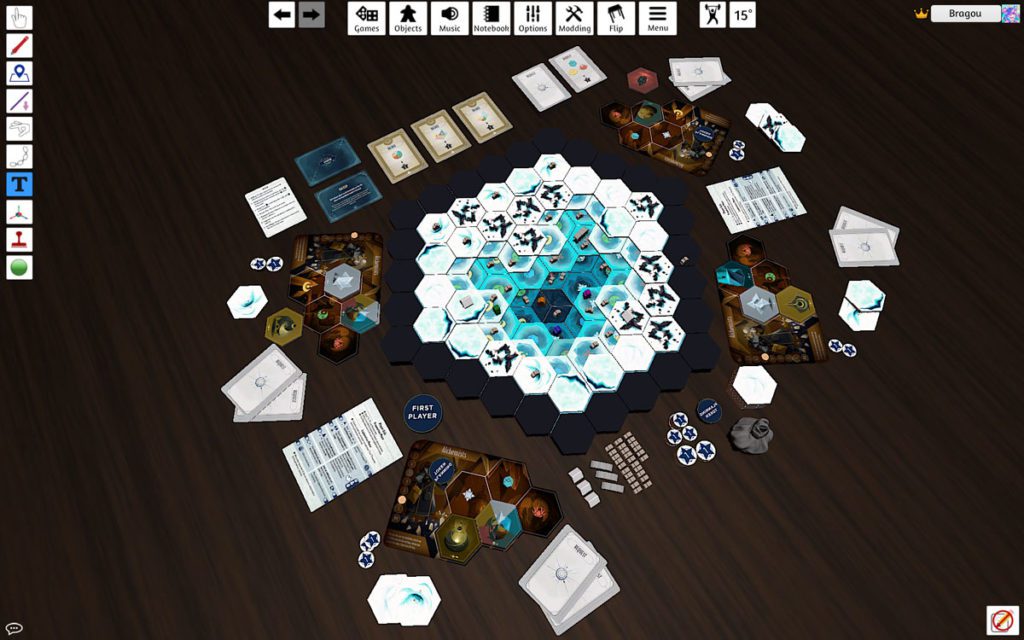
S : Yes, well… it was a big shift. Because at the beginning, we were obviously in a state of mind where we wanted to do a maximum of physical playtesting… like during festivals and conventions. But a pangolin decided otherwise and we had to switch to digital playtesting! Fortunately my brother trained in programming, and so he was able to develop the game from A to Z on the Tabletop Simulator. And this was really a lifesaver and allowed us to get many feedbacks on the gameplay.
H : Yes, concerning the playtests, they were mainly done on Tabletop Simulator. But at the beginning, as Samson said, we had no plans to make a TTS version of our game. During these weird years, we had no choice but to do it. Making a TTS version was not that hard even for the script part (because fortunately I have some knowledge about “lua” — the code language of TTS). And we already playtested hundreds of times our game on this platform.
A : Ok, so where exactly is the world of I C E supposed to take place? And when? To borrow from a popular film, is it “A long time ago, in a galaxy far, far away?” Or is it in an alternate Earth? Or perhaps it’s this Earth, but in the distant future? Like… what’s the deal?
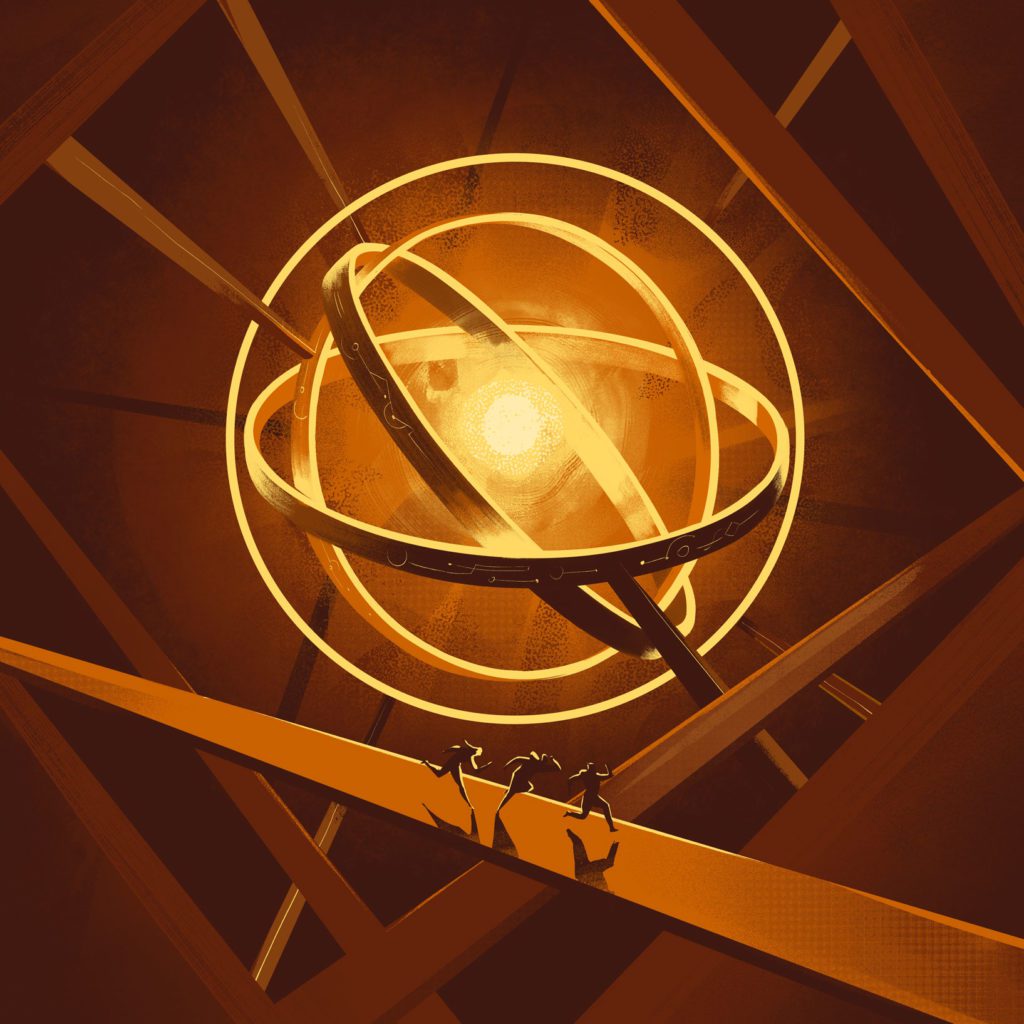
S : The universe is clearly futuristic, a kind of dystopia. Some will see the earth after a nuclear winter and others an alternative reality where humanity is living an ice age (it’s quite a classic cycle after all on Earth, there has been like 17 ice ages during the quaternary period). This being said, it is not written anywhere that I C E takes place on Earth. The gamers — the players — can choose. Even if the launching of the campaign was on “May the Fourth.”
A : Yea, it’s true — it was May the Fouth! Besides the clever mechanic of the multi-level tiles, a lot of backers of I C E were super enthusiastic about the artwork by Léonard. How did you discover him and start collaborating on this project together?
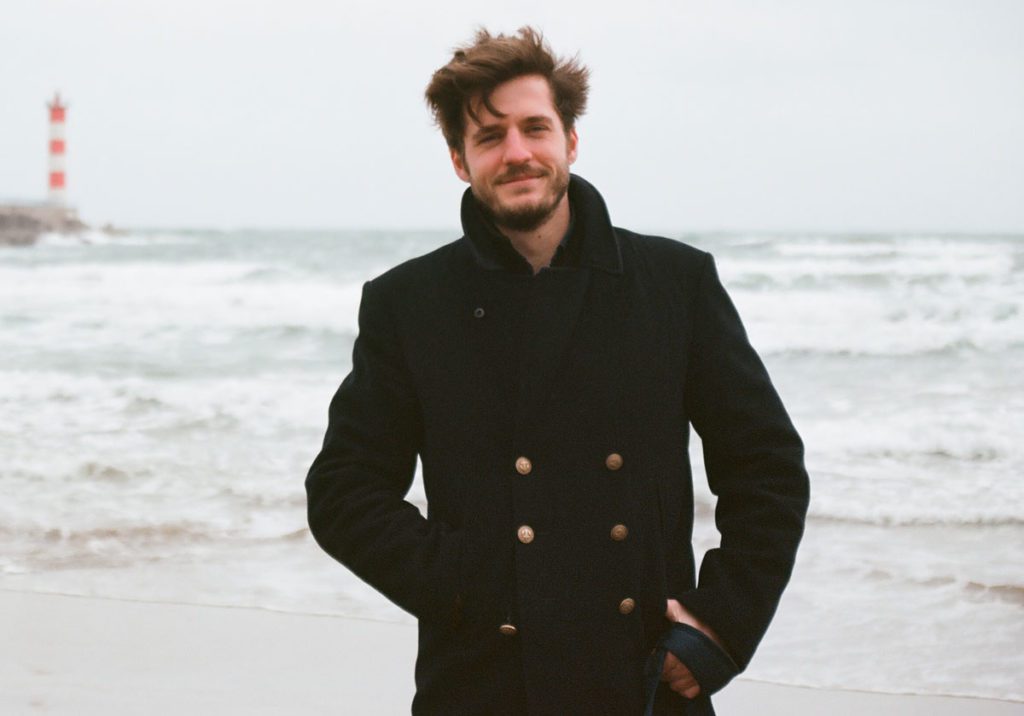
H : We collaborated very quickly with Leonard. In fact, I was working in the same coworking as him, and that’s how I discovered his beautiful illustrations. So just a few months after starting the first drafts of game design I went to see him, shyly, at his office and asked him what he thought about working on a board game project. And finally he was excited by the lore, and we didn’t really have to convince him more before he sent us the first sketches of I C E.
A : Oh wow, ok.
S : And he was the only illustrator we speak with, the first one and the last one.
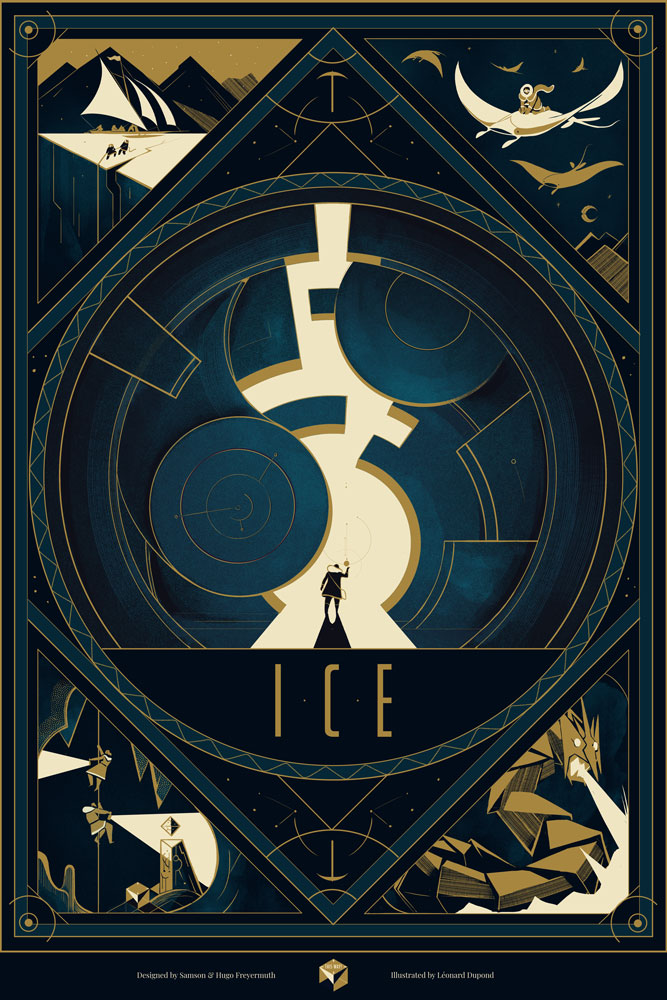
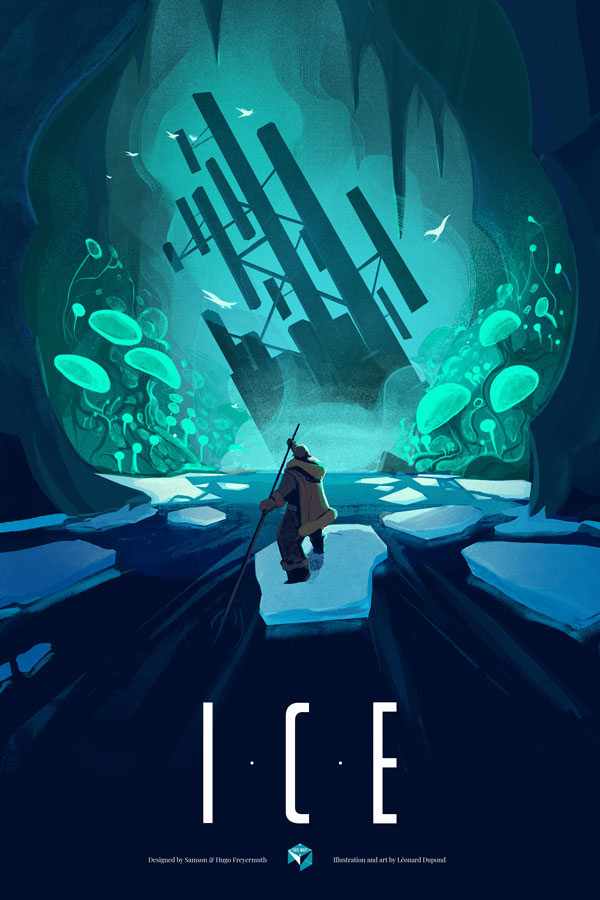
A : I mean, if the first person you go to is Leonard you don’t need to go anywhere else, because his stuff is amazing!
H : I really want to thank him. Because we didn’t have any funds at the beginning…
A : Any budget...
H : …and therefore no way to pay Leonard, before the Kickstarter. So I would really like to sincerely thank him for his investment and his trust!
S : During two years !
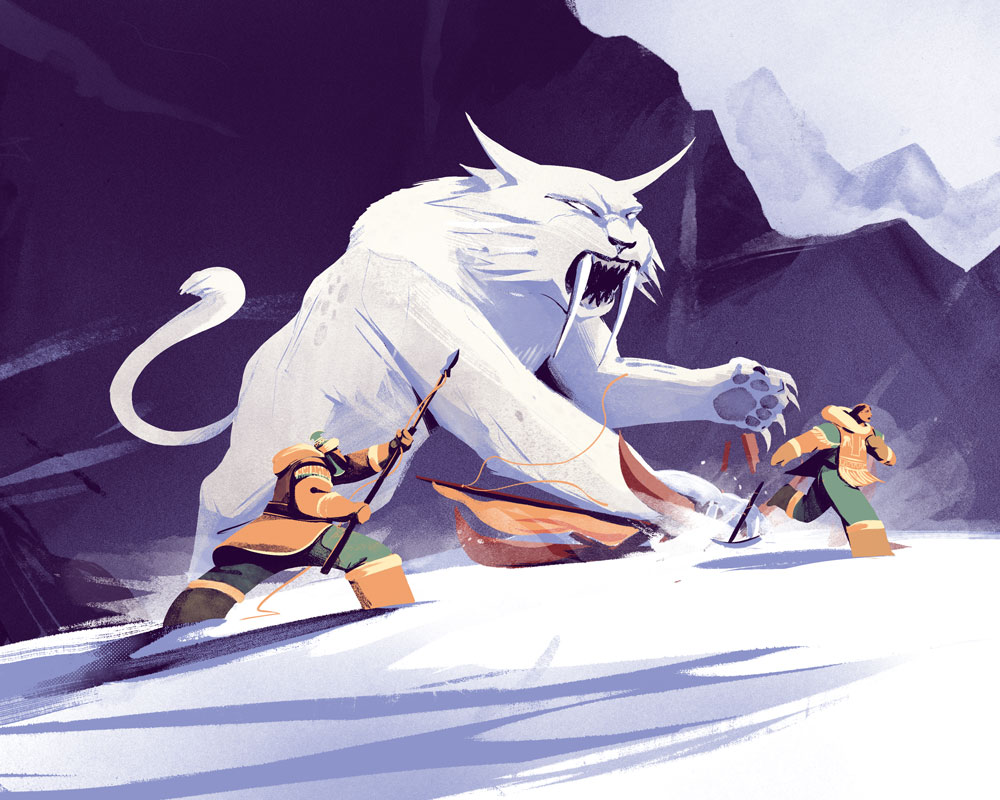
A : What about your graphic designer [Alexis Vanmeerbeeck]? He’s worked on some of my favorite games, including 7 Wonders. How did you all connect, and what’s it been like working together? Tell me.
S : Alexis came much later. It was around like December 2020. We wanted to recruit a very competent person in the field with a strong experience in board games. We received about fifteen or twenty proposals for the position. We finally managed to define a top three by discussing… Hugo, Leonard and me. And Alexis had been recommended to us by Guillaume Pilon, with whom we were in contact, and we opted for this choice… which is clearly a success, both human and graphically !
H : Yeah, it’s really great to work with him – Alexis. He is very talented, like Léonard, and very nice and above all very patient! Because I C E is our first game, we sometimes make mistakes or do things backwards, which can involve retakes on graphic elements that was supposed to be final… And he just made it.
And I must admit that working with the designer of one of my favorite games is like realizing a childhood dream! Thanks Alexis!
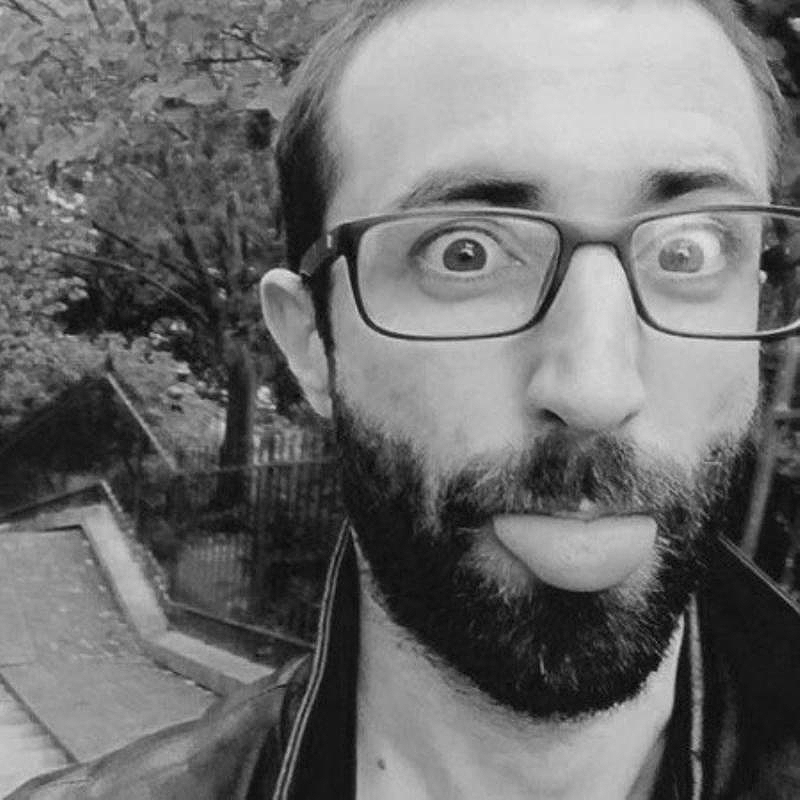
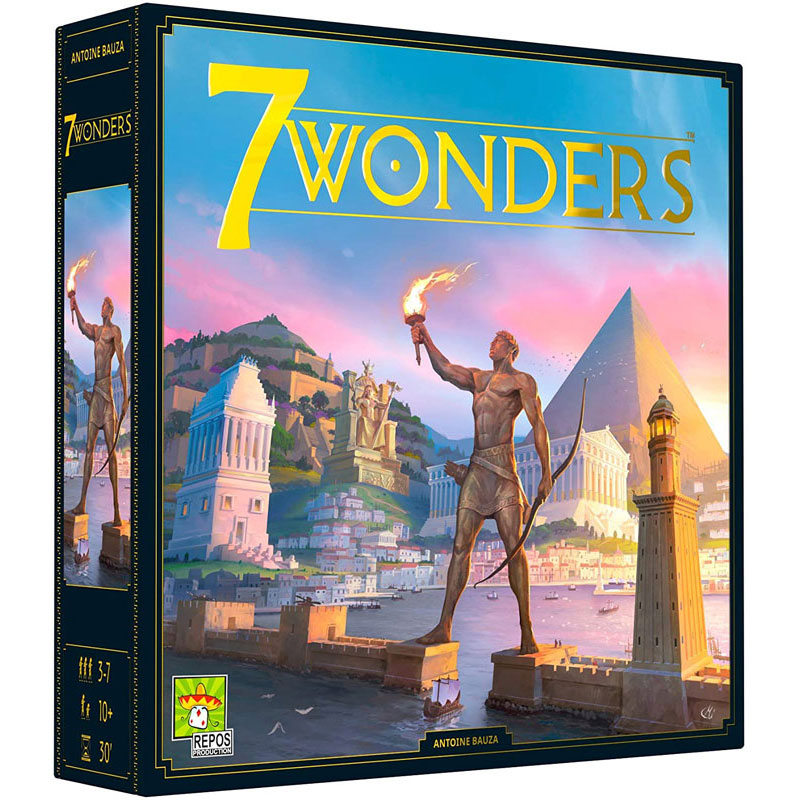
A : And that’s 7 Wonders, right?
H : Yeah! It’s one of my favorite games.
A : Who created the video for your Kickstarter campaign?
H : It was Noémi Gruner. Samson and I had a very general idea of what we wanted, we had references from other trailers and some illustrations… specific illustrations from I C E. Not so much stuff. Because Noémi Gruner is actually my girlfriend I naturally thought about her making the trailer. Her graphic sensibility is very close to the game’s AD, she was able to follow the project from its genesis, and I had total confidence in her for the realization of the trailer.
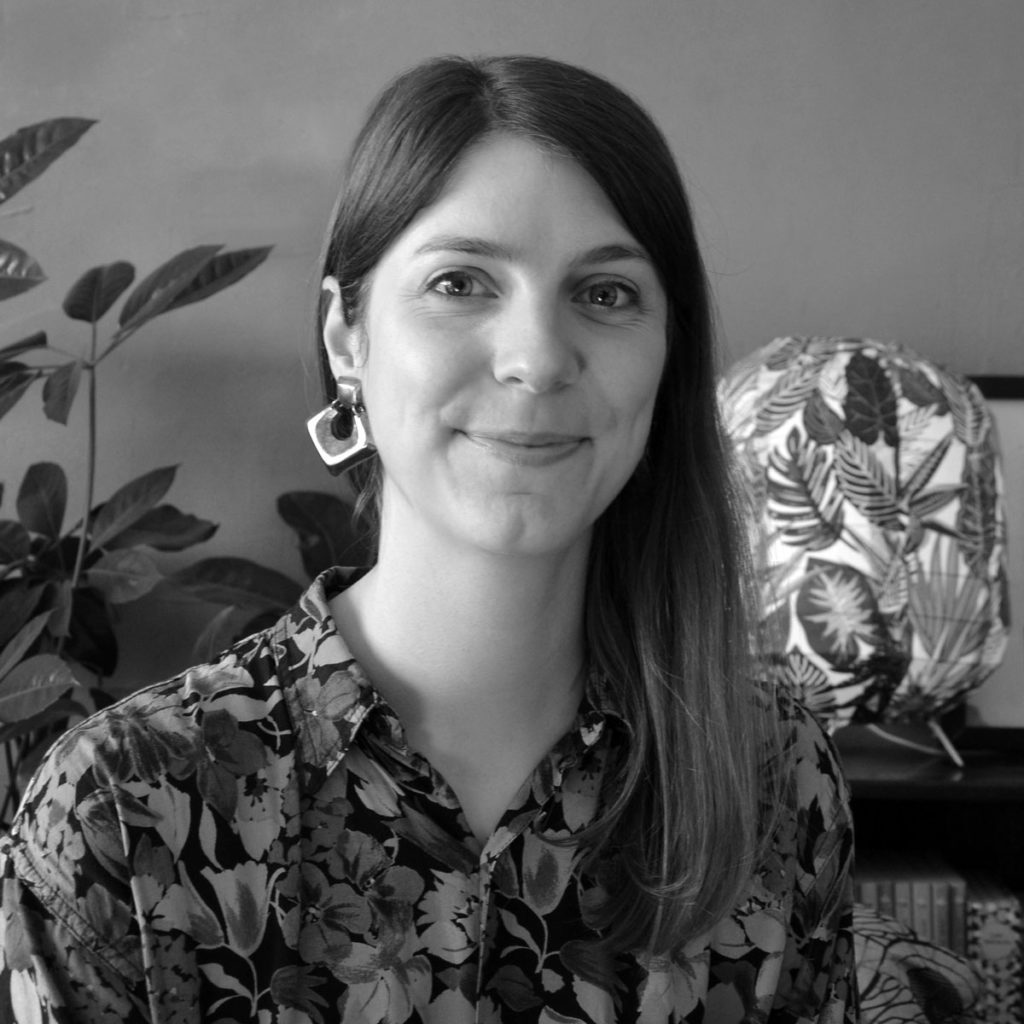
A : It’s amazing! Like I love how it takes Leonard’s art and makes it move. Do you know how that’s done? The kinda semi-animation part of it?
H : Yes, it’s compositing work. It was made by Antoine… Delebarre? (I don’t remember his family name — I will not say it again) But yeah, he made beautiful work on that art. Actually the trailer was made by [7] different people : there was the two voice actors, and plenty of other guys. Noémi of course. The 3D artist, and the compositing artist, [a cameraman, and Leonard for the illustrations].
A: OK… that’s all the time we have for Part One of this Interview. Stay tuned for Part Two, with Samson & Hugo… coming soon!
